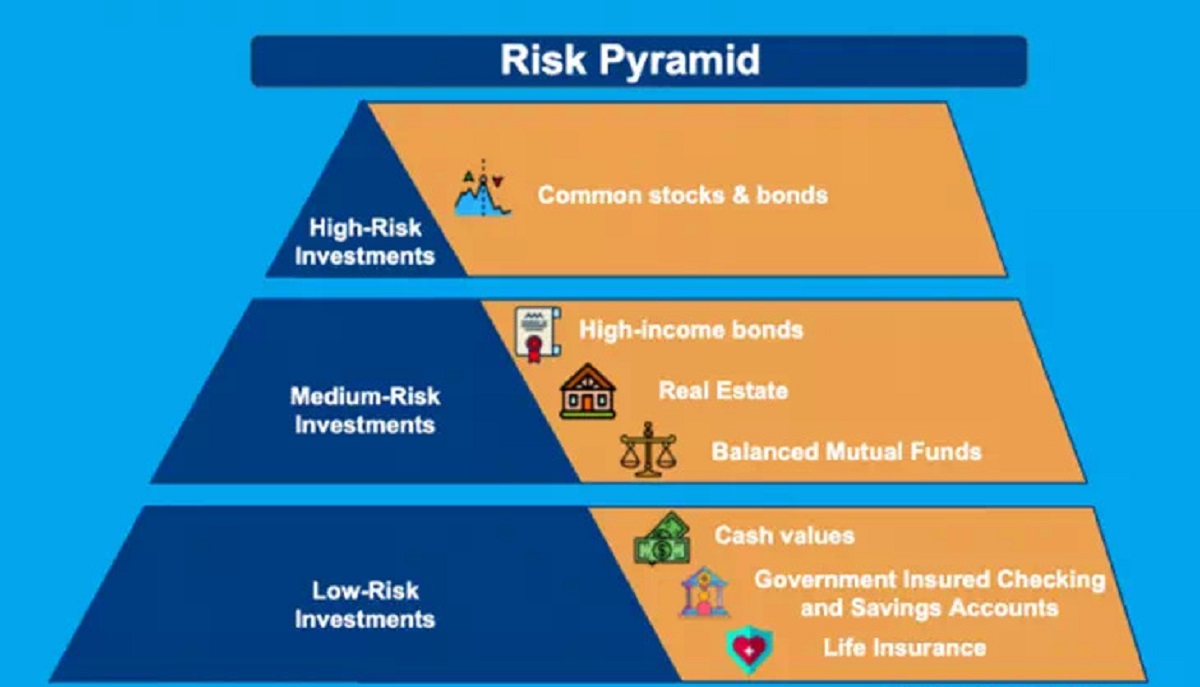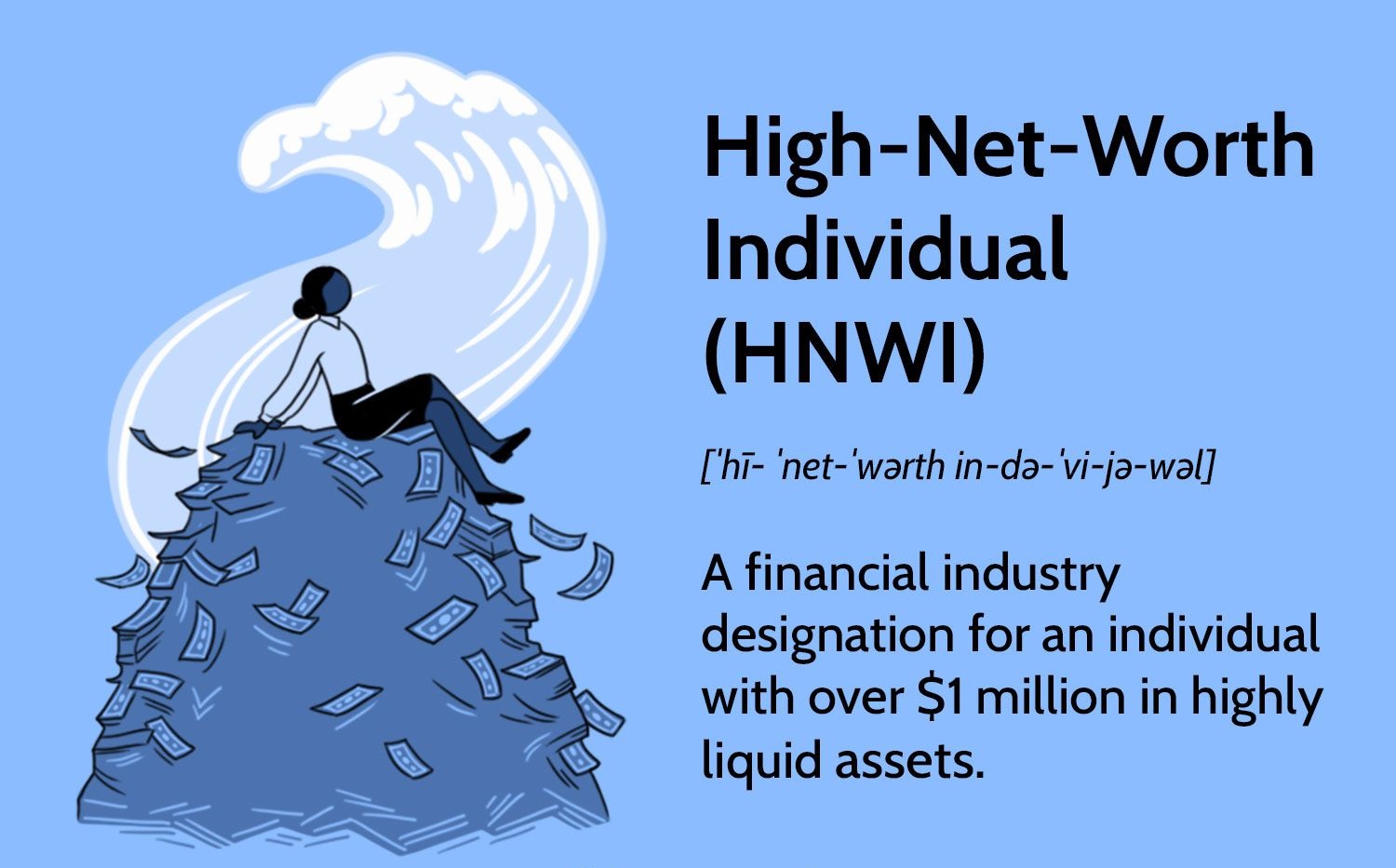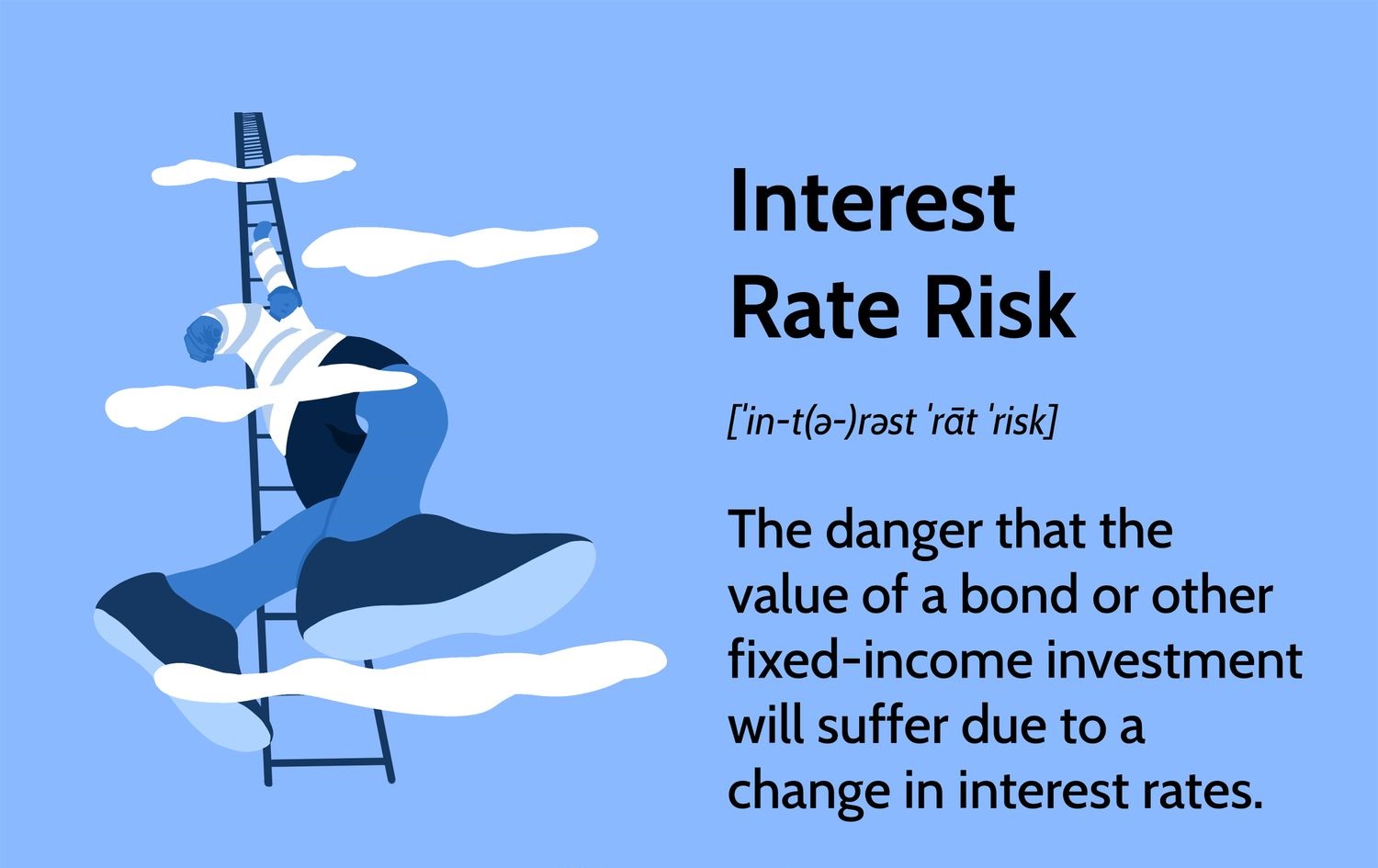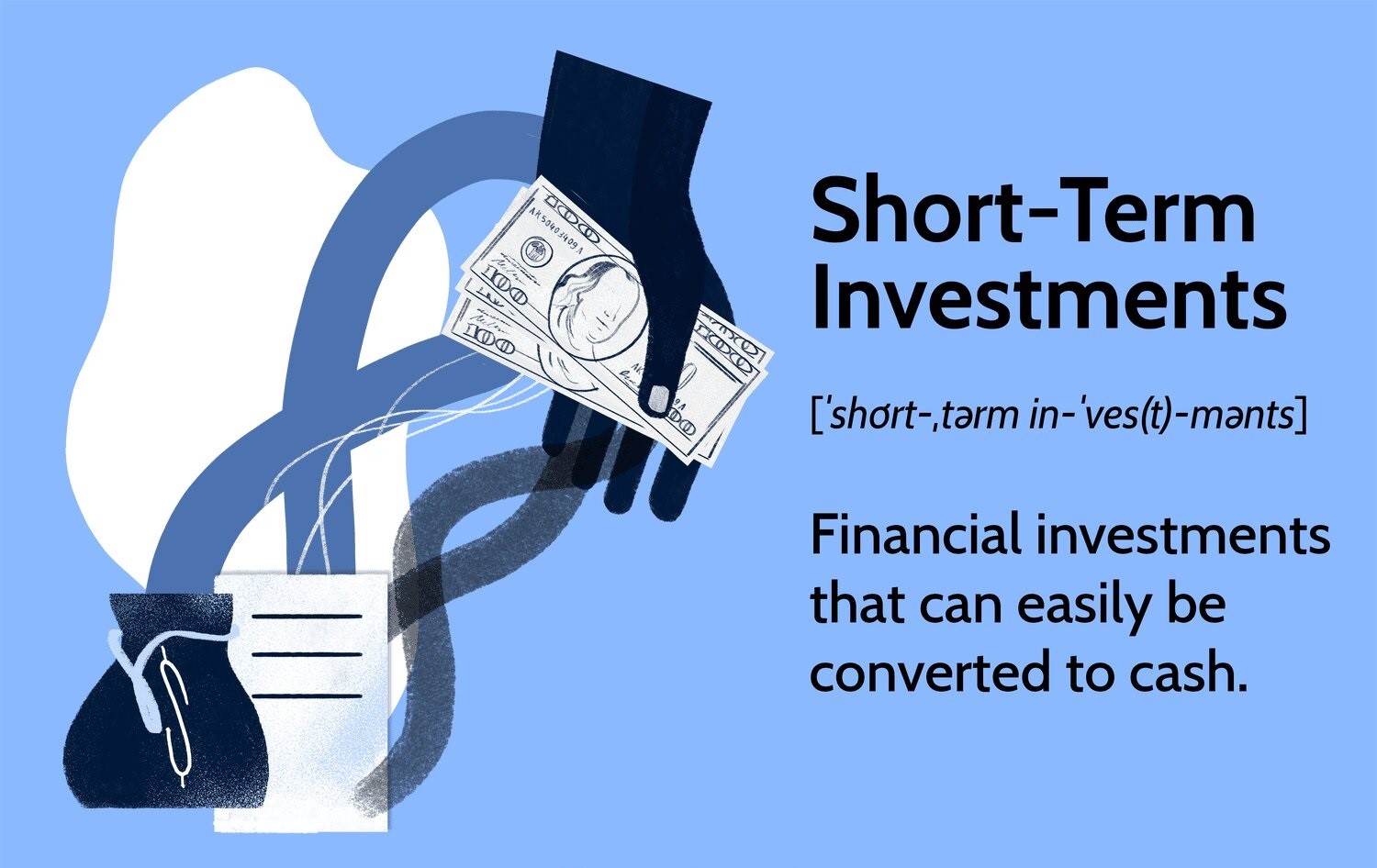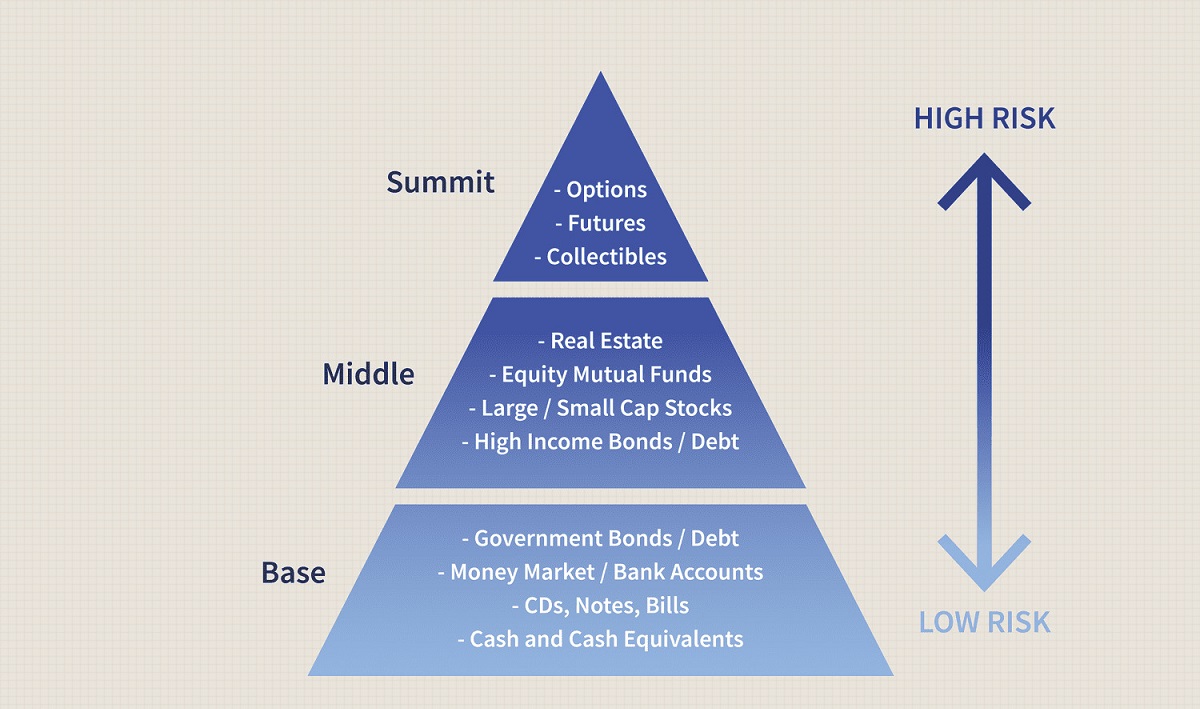Introduction
When it comes to investing, there are always risks involved. However, for those looking to take on even greater challenges and potentially higher rewards, high-risk investments might be the way to go. These types of investments typically involve a higher degree of uncertainty and volatility, but they can also offer significant returns for those who are willing to take the risk.
In this article, we will explore some of the most common high-risk investments that investors consider. It’s important to note that while these investments have the potential for high returns, they also carry a greater risk of loss. It’s crucial to understand the associated risks and do thorough research before deciding to invest.
Before diving into the specifics, it’s worth mentioning that high-risk investments are not suitable for everyone. Investors should have a clear understanding of their risk tolerance and financial goals before venturing into these opportunities. Additionally, seeking advice from a financial advisor or investment professional can provide valuable insights tailored to individual circumstances.
With that said, let’s explore some of the high-risk investment options available:
Real Estate
Real estate has long been a popular investment option due to its potential for substantial returns. Investing in real estate involves purchasing properties, such as residential homes, commercial buildings, or land, with the goal of generating income through rental payments or property appreciation.
While real estate has the potential for high returns, it also comes with substantial risks. Market fluctuations, changes in demand, and economic downturns can impact property values and rental incomes. Additionally, there are costs involved in property maintenance, taxes, insurance, and vacancies that must be considered.
One of the riskiest real estate investments is flipping properties. Flipping involves purchasing a property, renovating or improving it, and quickly selling it for a profit. This strategy can be lucrative, but it requires careful analysis, extensive knowledge of the local real estate market, and the ability to accurately estimate renovation costs.
Another high-risk real estate investment is investing in undeveloped land. While land prices can appreciate significantly over time, there are no guarantees. Factors such as zoning regulations, market conditions, and accessibility can impact the land’s future value.
Real estate investment trusts (REITs) are another option for those interested in real estate without the hassle of property management. REITs allow individuals to invest in a portfolio of properties managed by a company. However, like any investment, REITs carry their own risks and it’s important to research the specific REIT and understand its investment strategy.
Overall, real estate can be a high-risk investment, but it also has the potential for substantial returns. It requires thorough research, market knowledge, and financial planning to mitigate the risks and maximize the rewards.
Commodities
Investing in commodities involves trading in physical goods such as gold, oil, natural gas, agricultural products, and industrial metals. Commodities are known for their volatility and can be highly unpredictable due to factors such as supply and demand dynamics, geopolitical events, and global economic conditions.
One of the riskiest forms of commodity investing is trading futures contracts. Futures contracts allow investors to buy or sell a specific quantity of a commodity at a predetermined price and date in the future. While futures trading can offer high profits, it also carries a significant risk of substantial losses. It requires deep market knowledge, skillful timing, and careful risk management.
Another high-risk commodity investment is investing in leveraged exchange-traded funds (ETFs) or exchange-traded notes (ETNs). These investment vehicles use financial derivatives to amplify the returns of the underlying commodities. The use of leverage can magnify both profits and losses, making them highly speculative investments that may not be suitable for all investors.
Investing directly in physical commodities, such as gold or silver, also carries its own set of risks. Prices can be affected by various factors, including global economic conditions, political instability, and changes in supply and demand. Additionally, storage and handling costs can eat into potential gains.
When considering commodity investments, it’s important to conduct thorough research, monitor market trends, and stay updated on relevant news and events that can impact commodity prices. Diversification is also key to reduce risk, as investing in a variety of commodities can help balance potential losses in one area with gains in another.
Overall, investing in commodities can be highly volatile and speculative. It requires careful analysis, risk management, and a deep understanding of the factors that drive commodity prices.
Penny Stocks
Penny stocks are low-priced stocks that typically trade for under $5 per share. These stocks often belong to small companies with a market capitalization of less than $300 million. While they may seem attractive to investors due to their low cost, penny stocks can be highly risky and speculative.
One of the main risks associated with penny stocks is their lack of liquidity. These stocks often have low trading volumes, making it difficult to buy or sell them at desired prices. This illiquidity can lead to significant price volatility and make it challenging to exit positions when needed.
Furthermore, penny stocks are known for their susceptibility to manipulation and fraud. Due to their low share prices and lack of stringent regulations, unscrupulous individuals may exploit these stocks by artificially inflating their prices through false promotional activities or misleading information. As a result, investors may be lured into buying stocks that are not based on solid fundamentals and suffer substantial losses when the bubble bursts.
It’s also important to note that many penny stocks represent companies in the early stages or facing financial distress. They often have limited operating history, minimal revenue, and uncertain prospects for growth. This increases the risk of investing in these stocks as there is a higher likelihood of business failure or bankruptcy.
Despite the risks, some investors are drawn to penny stocks due to their potential for explosive gains. In a few rare cases, penny stocks have skyrocketed in value, generating substantial returns for those who timed their investments correctly. However, it’s crucial to approach penny stock investing with caution, conducting thorough research, and diversifying your portfolio to mitigate the risks.
Overall, penny stocks can offer high-risk, high-reward opportunities, but investors should exercise extreme caution and skepticism. It’s essential to approach penny stock investing with a long-term perspective, proper risk management, and a comprehensive understanding of the inherent risks involved.
Initial Coin Offerings (ICOs)
Initial Coin Offerings (ICOs) have gained significant attention in recent years as a new form of fundraising for cryptocurrency and blockchain projects. An ICO involves the sale of digital tokens or coins to investors in exchange for traditional currency or established cryptocurrencies like Bitcoin or Ethereum.
ICOs are considered high-risk investments due to several factors. First, the lack of regulatory oversight and the relative newness of the ICO market make it prone to fraud and scams. Investors need to exercise caution and thoroughly research the project, the team behind it, and the technology being developed.
Additionally, investing in ICOs comes with a high degree of volatility. The values of ICO tokens can fluctuate dramatically, sometimes within a short period. The market for ICOs can be highly speculative, driven by investor sentiment and market trends, making it difficult to predict the future value of tokens.
Furthermore, the success of an ICO project is uncertain. Many startups that launch ICOs fail to deliver on their promises or cannot achieve their intended goals. It’s important for investors to carefully evaluate the viability and potential of the project, including the technological innovation, market demand, and business strategy.
ICOs also pose liquidity risks. Unlike traditional securities, ICO tokens may not have established secondary markets, and it can be challenging to sell them or convert them back to traditional currency or other cryptocurrencies. This illiquidity can limit the ability to exit positions or capitalize on potential gains.
While ICOs can present attractive investment opportunities, it’s essential to approach them with caution and conduct thorough due diligence. Investors should only participate in ICOs with money they can afford to lose and diversify their portfolio to mitigate risks.
Regulatory developments regarding ICOs vary across jurisdictions. Some countries have implemented regulations or restrictions to protect investors, while others have taken a more cautious approach. Staying informed about the legal and regulatory landscape is crucial when considering ICO investments.
In summary, investing in ICOs can bring potential high returns, but it also carries substantial risks due to the lack of regulation, market volatility, project uncertainties, and limited liquidity. Investors should approach ICOs with caution and only invest after careful evaluation and risk assessment.
Venture Capital
Venture capital (VC) is a form of financing that involves investments in early-stage companies with high growth potential. VC firms provide capital to startups in exchange for equity, typically aiming for significant returns upon a successful exit, such as an initial public offering (IPO) or acquisition by a larger company.
Investing in venture capital can be highly risky due to the nature of early-stage companies. These startups often have unproven business models, untested products or services, and uncertain market demand. As a result, there is a higher likelihood of failure compared to more established companies.
One of the risks associated with venture capital is the illiquidity of investments. VC investments have longer holding periods, often ranging from several years to a decade or more, as startups need time to grow and mature. It can take a while before investors can realize returns on their investments.
VC investments are also subject to market risks. Economic conditions, market shifts, and changes in consumer behavior can impact the success of the startups in a venture capital portfolio. Additionally, competition within industries and evolving technologies can create challenging environments for startups to thrive.
Furthermore, investors in venture capital should be aware of the high failure rate of startups. Not all early-stage companies will succeed, and the risk of losing the entire investment is very plausible. Due diligence and thorough assessment of the startup’s team, market opportunity, competitive landscape, and product or service differentiation are crucial to mitigate risks.
Despite the risks, venture capital investments can offer substantial rewards. Successful investments in startups that experience rapid growth and achieve successful exits can generate significant returns for investors. However, it’s important to approach venture capital with a diversified portfolio and to work with experienced VC firms or professionals who have a track record of identifying promising startups.
Overall, venture capital investing entails significant risk, but it can also be a rewarding strategy for those seeking high-growth opportunities. Diligent research, careful selection of startups, and a long-term investment perspective are essential when considering venture capital investments.
Forex Trading
Forex, short for foreign exchange, involves trading one currency for another in the global marketplace. With the largest trading volume and high liquidity, forex trading has attracted many investors seeking potential profits from fluctuating currency exchange rates.
While forex trading can offer lucrative opportunities, it is also considered one of the riskiest investment options. The volatility of currency markets can lead to rapid price fluctuations, making it challenging to predict movements accurately. The high leverage offered in forex trading allows traders to control large positions with a small amount of capital, amplifying potential gains but also increasing the risk of substantial losses.
One of the significant risks in forex trading is the impact of economic and political events on currency prices. News releases such as interest rate decisions, economic indicators, and geopolitical developments can cause significant market volatility and affect currency values in a matter of minutes. It requires constant monitoring of news and economic factors to make informed trading decisions.
Lack of market regulation is another risk in forex trading. Transactions in the forex market take place over-the-counter (OTC), meaning there is no centralized exchange or governing body. This decentralization opens up the possibility of scams, market manipulation, and fraudulent activities by unscrupulous brokers. Traders must conduct thorough research and choose reputable forex brokers to minimize these risks.
Additionally, forex trading requires a deep understanding of technical and fundamental analysis. Traders must have knowledge of chart patterns, indicators, economic factors, and geopolitical events that can impact currency movements. Lack of expertise can lead to poor trading decisions and substantial losses.
Furthermore, forex trading involves the constant presence of financial institutions and large market participants. These institutional players have access to extensive resources, advanced trading technologies, and experienced traders, giving them an edge over individual retail traders. It can be challenging for individual traders to compete with these market participants.
It’s essential to approach forex trading with a comprehensive strategy, risk management techniques, and a realistic understanding of potential losses. Traders should start with a small investment, use appropriate risk-reward ratios, and consider the impact of leverage when making trading decisions.
In summary, forex trading can offer potential profits, but it also comes with significant risks. Volatility, lack of regulation, economic factors, and the presence of institutional players make forex trading a highly speculative investment. Traders should possess the necessary knowledge, skills, and risk management strategies to navigate the forex market successfully.
Options and Futures
Options and futures are derivative financial instruments that allow traders to speculate on the future price movements of underlying assets, such as stocks, commodities, or indices.
Options give the holder the right, but not the obligation, to buy or sell the underlying asset at a predetermined price, known as the strike price, within a specific timeframe. They provide flexibility and can be used for various strategies, including hedging and speculating on the direction of price movements.
Futures contracts, on the other hand, require the buyer to purchase the underlying asset or the seller to sell it at a specified price and date in the future. Futures are standardized contracts traded on exchanges, providing liquidity and allowing investors to profit from price fluctuations without owning the actual asset.
Options and futures trading can be highly risky due to several factors. The leverage involved in these instruments allows traders to control a large amount of underlying assets with a relatively small investment. While this amplifies potential profits, it also magnifies losses, making it important for traders to manage risk and use appropriate position sizing.
Market volatility is a significant risk in options and futures trading. Price movements can be swift and unpredictable, especially during times of economic, political, or market uncertainty. Traders need to be prepared for rapid changes in market conditions and employ effective risk management strategies.
Moreover, options and futures trading require a thorough understanding of the underlying markets and sophisticated trading strategies. Factors such as time decay, implied volatility, and the Greeks (delta, gamma, theta, and vega) can impact the value of options contracts. Futures traders need to analyze supply and demand dynamics, seasonal trends, and market sentiment, among other factors.
Lack of liquidity can also pose risks in options and futures trading, especially in less actively traded contracts. Thinly traded markets can result in wider bid-ask spreads, making it more difficult to enter or exit positions at desired prices. This illiquidity can also increase the risk of slippage, where the executed trade price differs from the intended price.
Traders considering options and futures should have a comprehensive understanding of these complex instruments and the associated risks. It’s crucial to develop a trading plan, employ risk management techniques, and continuously educate oneself to improve trading skills.
In summary, options and futures trading offer opportunities for speculation and hedging, but they come with significant risks. Traders need to understand the complexities of these instruments, manage risk effectively, and stay informed about market conditions to navigate the options and futures markets successfully.
Peer-to-Peer Lending
Peer-to-peer lending (P2P lending) is a form of lending that connects borrowers directly with lenders through online platforms. This alternative lending model enables individuals or businesses to borrow money without going through traditional financial institutions, such as banks.
P2P lending offers several benefits, such as streamlined application processes, faster funding, and potentially lower interest rates for borrowers. It provides an opportunity for individuals who may not qualify for traditional loans to access financing. Additionally, lenders can earn higher interest rates compared to traditional low-yield savings accounts or other investment options.
However, P2P lending also comes with risks that borrowers and lenders should be aware of. One of the significant risks for lenders is the potential for default. Borrowers may not repay their loans, leading to a loss of principal and interest for the lenders. P2P platforms usually have risk assessment and credit scoring systems in place, but there is still the possibility of financial difficulties or fraudulent activities by borrowers.
Marketplace stability is another risk in P2P lending. Economic downturns or changes in regulatory environments can impact the performance of P2P lending platforms. Lenders should research the reputation and financial stability of the platforms before lending their money.
Liquidity can also be a concern in P2P lending. Unlike traditional investments, P2P loans generally have fixed terms, and lenders may not be able to access their funds until the loan is repaid. Some platforms offer secondary markets where lenders can sell their loans, but this can come with additional transaction costs and potential limitations.
Furthermore, P2P lending is subject to regulatory risks. Legislative changes or increased scrutiny from financial authorities can affect the operations and viability of P2P lending platforms. Lenders should stay informed about regulations in their jurisdiction and understand the potential impact on their investments.
It’s important for both borrowers and lenders to carefully evaluate the terms and conditions of P2P lending, including interest rates, fees, and repayment schedules. Borrowers should consider their ability to repay the loans, while lenders should diversify their portfolio to mitigate the risk of default.
In summary, P2P lending can provide an alternative source of financing for borrowers and investment opportunities for lenders. It comes with risks, such as default, marketplace stability, liquidity concerns, and regulatory changes. Borrowers and lenders should conduct thorough research, assess their risk tolerance, and use reputable P2P lending platforms to manage these risks effectively.
High-Yield Bonds
High-yield bonds, also known as junk bonds, are fixed-income securities issued by companies with lower credit ratings. These bonds offer higher interest rates to compensate investors for the increased risk of default compared to investment-grade bonds.
Investing in high-yield bonds can be attractive for investors seeking higher yields than those offered by government or investment-grade corporate bonds. The higher interest rates can provide a steady stream of income and potentially enhance overall portfolio returns.
However, high-yield bonds come with significant risks that investors should carefully consider. The lower credit ratings assigned to these bonds reflect a higher probability of default. Companies issuing high-yield bonds often have weaker financial positions, higher debt burdens, or face economic challenges. As a result, there is an increased risk of bondholders not receiving interest payments or principal repayments as scheduled.
Market and economic conditions can also impact the performance of high-yield bonds. Economic downturns, industry-specific challenges, or changes in investor sentiment can lead to increased default rates and lower bond prices. In times of market stress, liquidity can become a concern as selling high-yield bonds may be more difficult, further exacerbating the risks.
Another risk to consider is interest rate risk. High-yield bonds are more sensitive to changes in interest rates compared to investment-grade bonds. As interest rates rise, the market prices of existing high-yield bonds can decline, potentially eroding the value of the investment.
Diversification is a crucial strategy in high-yield bond investing. By spreading investments across various issuers and industries, investors can hedge against the risk of any single bond defaulting. Diversification can help mitigate the impact of default rates and potentially enhance the overall risk-return profile of the portfolio.
It’s important for investors in high-yield bonds to conduct thorough due diligence and analyze the creditworthiness of issuers. Understanding the underlying financials, industry dynamics, and management capabilities of the companies issuing the bonds is essential in assessing the risk of default.
In summary, high-yield bonds offer the potential for higher yields but also come with increased risks. Default risk, market volatility, interest rate risk, and liquidity concerns should be carefully evaluated. Investors need to have a clear understanding of their risk tolerance and employ proper diversification strategies when investing in high-yield bonds.
Conclusion
High-risk investments can offer enticing opportunities for investors looking to achieve potentially higher returns. However, it is crucial to recognize that with increased rewards come increased risks. Before engaging in any high-risk investment, it is important for individuals to assess their risk tolerance, financial goals, and conduct thorough research to understand the potential benefits and drawbacks.
Real estate investments can provide significant returns, but market fluctuations and property management challenges can pose risks. Commodities trading can offer lucrative opportunities, but the volatility and unpredictability of commodity prices can lead to substantial losses. Penny stocks can bring the allure of explosive gains, but they are also prone to manipulation and fraud. Investing in initial coin offerings (ICOs) can be highly speculative due to the lack of regulation and market volatility. Venture capital investments can present opportunities for high-growth startups, but they also carry the risk of failure and illiquidity.
Forex trading offers potential profits from currency fluctuations, but it requires research, analysis, and an understanding of market dynamics. Options and futures trading brings the opportunity for speculating on price movements, but it involves complex strategies, volatility, and leverage risks. Peer-to-peer lending can provide access to funding for borrowers and attractive returns for lenders, but default risks and platform stability should be considered. High-yield bonds offer higher yields, but they come with a higher risk of default and market sensitivity.
It is crucial for investors to approach high-risk investments with caution. Diversification, thorough research, risk management techniques, and staying informed about market conditions are key in mitigating risks. Seeking advice from financial professionals can also provide valuable insights tailored to individual circumstances.
Ultimately, engaging in high-risk investments should align with personal financial goals and risk tolerance. By balancing the potential rewards with the associated risks, investors can make informed decisions to potentially achieve their desired investment outcomes.







